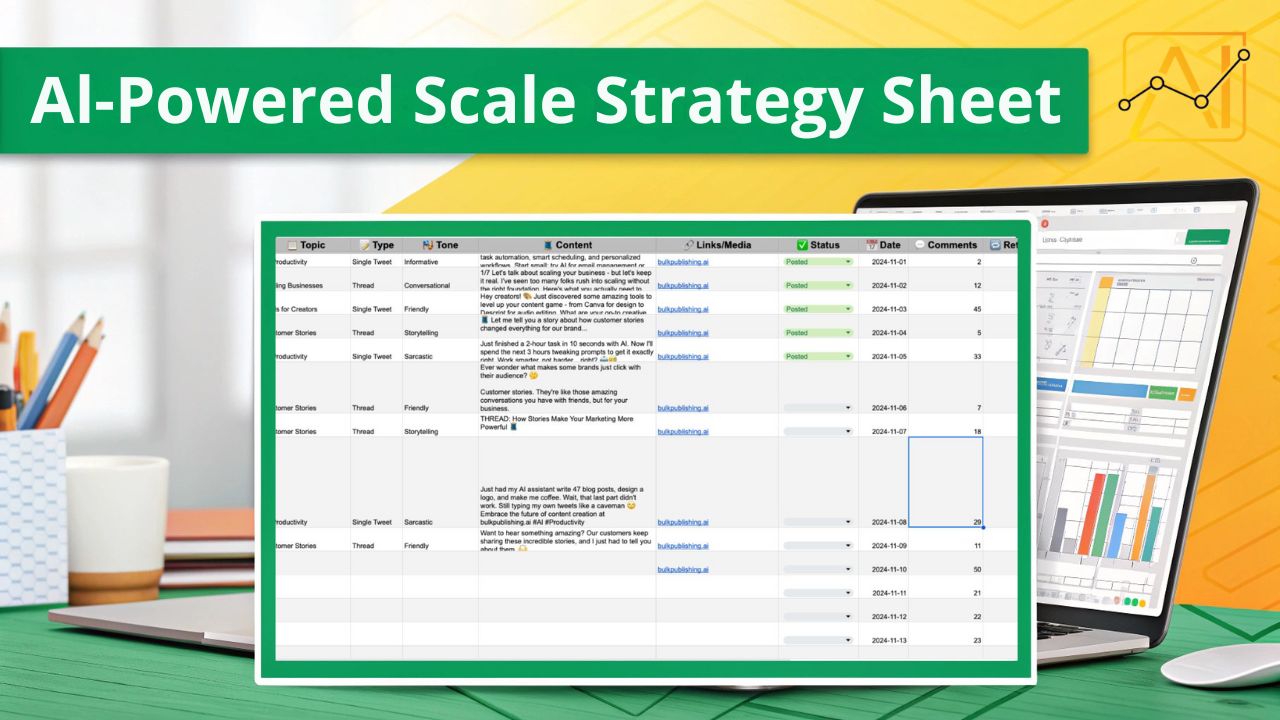ARIELLE PHOENIX



Helping SMBs and growing brands step into the future 🔮 with AI, No-Code, and Automation
Let's Build Smarter, Scale Faster
I help businesses of all sizes streamline content creation, boost traffic, and get noticed using a mix of generative AI, no-code solutions, and scalable systems.
Ready to leave behind manual grunt work? I build customized workflows and growth-driven strategies so you can focus on what really matters: scaling your product or service.
Ideation
brainstorm & research
Planning
define strategies, milestones, goals
MVP Solution
build early working model for testing
Deliverable
finalize and present finished product
Featured Guides

No Code AI Mobile App Web Development Prompt Engineering Guide
Master the art of prompt engineering to build mobile and web applications without code. Learn advanced techniques for generating complete, production-ready applications using AI.

No Code Web Development Prompt Engineering Guide
Learn how to create professional web applications without code using AI. Master prompt engineering techniques for building scalable, production-ready websites.

The Website Glow-Up Package
Transform your outdated business site into a modern, high-converting lead machine—in just 7 days for a flat $997. Stop losing potential customers to an outdated website.

No Code Dynamic Site Scaler Crash Course
For too long, building large-scale programmatic sites was only possible for developers. Now, AI-powered code generators handle the hard part for you. Whether it's web scraping, using databases, or deploying dynamic content at scale—you'll do it all without needing to touch a single line of code.

The AI-Powered Scale Strategy Sheet
Struggling to manage content creation, outreach, and social media while running your business? The Scale Strategy Sheet is a one-time purchase tool designed for entrepreneurs, agencies, and creators who want to streamline and scale digital marketing effortlessly.
11+
100%
What People Are Saying
Khushboo
@khushbooops
Love seeing what you're doing with the sheets and bulk content, Arielle. Can't wait to see what you've in store for next year.
Chris Peters
@TheeChrisPeters
This looks amazing. I love it. I'm just trying to think how this will work for my niche. Maybe I should start a new site!
Leslie T
The sheet works great for me now. Love it so much. Been playing around with creating new prompts—oddly enough, I am liking the 6th grade level output more.
Florence
I've generated over 10 of my own prompts. Prompt is an art—I believe it. There's no limit to how to customize every article in a unique way. Thank you for this master class.
Libertas
@libertasJP
ChatGPT content is getting caught in AI detectors, even with long prompts. Rephrased it in your spreadsheet: 100% unique. Useful for planning content, less so for creating it.
John Tackett
I purchased the course and recommend. Arielle is great!
Huw Hughes
@HuwHughes
Only gone and found out that @ArielleCPX has an awesome course which I just purchased. I'm all in!
Daniel Kroft
@thedanielkroft
Great course!! Using this to experiment with a few ideas. Generated 1,000 articles over the weekend for one of my unused domains!
Simone de Vlaming
@beautymone
I easily created 37 new posts in just ~2 hours—just need to proofread them, tweak the text, and add images!
Simone de Vlaming
@beautymone
Just purchased @ArielleCPX’s magical Bulk Publishing System. It has a bit of a learning curve for an Excel noob like me, but so far, it's so good!
Anonymous Buyer
I've been waiting for it since you've been teasing bits on Twitter. Exactly what I've been looking for. Pat Walls from Starter Story did something similar, but it wasn't easy for non-programmers.
Khushboo
@khushbooops
Love seeing what you're doing with the sheets and bulk content, Arielle. Can't wait to see what you've in store for next year.
Chris Peters
@TheeChrisPeters
This looks amazing. I love it. I'm just trying to think how this will work for my niche. Maybe I should start a new site!
Leslie T
The sheet works great for me now. Love it so much. Been playing around with creating new prompts—oddly enough, I am liking the 6th grade level output more.
Florence
I've generated over 10 of my own prompts. Prompt is an art—I believe it. There's no limit to how to customize every article in a unique way. Thank you for this master class.
Libertas
@libertasJP
ChatGPT content is getting caught in AI detectors, even with long prompts. Rephrased it in your spreadsheet: 100% unique. Useful for planning content, less so for creating it.
John Tackett
I purchased the course and recommend. Arielle is great!
Huw Hughes
@HuwHughes
Only gone and found out that @ArielleCPX has an awesome course which I just purchased. I'm all in!
Daniel Kroft
@thedanielkroft
Great course!! Using this to experiment with a few ideas. Generated 1,000 articles over the weekend for one of my unused domains!
Simone de Vlaming
@beautymone
I easily created 37 new posts in just ~2 hours—just need to proofread them, tweak the text, and add images!
Simone de Vlaming
@beautymone
Just purchased @ArielleCPX’s magical Bulk Publishing System. It has a bit of a learning curve for an Excel noob like me, but so far, it's so good!
Anonymous Buyer
I've been waiting for it since you've been teasing bits on Twitter. Exactly what I've been looking for. Pat Walls from Starter Story did something similar, but it wasn't easy for non-programmers.
Khushboo
@khushbooops
Love seeing what you're doing with the sheets and bulk content, Arielle. Can't wait to see what you've in store for next year.
Chris Peters
@TheeChrisPeters
This looks amazing. I love it. I'm just trying to think how this will work for my niche. Maybe I should start a new site!
Leslie T
The sheet works great for me now. Love it so much. Been playing around with creating new prompts—oddly enough, I am liking the 6th grade level output more.
Florence
I've generated over 10 of my own prompts. Prompt is an art—I believe it. There's no limit to how to customize every article in a unique way. Thank you for this master class.
Libertas
@libertasJP
ChatGPT content is getting caught in AI detectors, even with long prompts. Rephrased it in your spreadsheet: 100% unique. Useful for planning content, less so for creating it.
John Tackett
I purchased the course and recommend. Arielle is great!
Huw Hughes
@HuwHughes
Only gone and found out that @ArielleCPX has an awesome course which I just purchased. I'm all in!
Daniel Kroft
@thedanielkroft
Great course!! Using this to experiment with a few ideas. Generated 1,000 articles over the weekend for one of my unused domains!
Simone de Vlaming
@beautymone
I easily created 37 new posts in just ~2 hours—just need to proofread them, tweak the text, and add images!
Simone de Vlaming
@beautymone
Just purchased @ArielleCPX’s magical Bulk Publishing System. It has a bit of a learning curve for an Excel noob like me, but so far, it's so good!
Anonymous Buyer
I've been waiting for it since you've been teasing bits on Twitter. Exactly what I've been looking for. Pat Walls from Starter Story did something similar, but it wasn't easy for non-programmers.